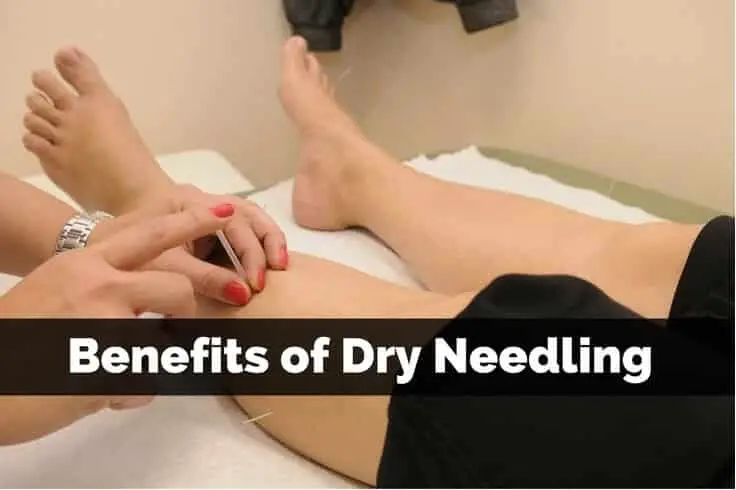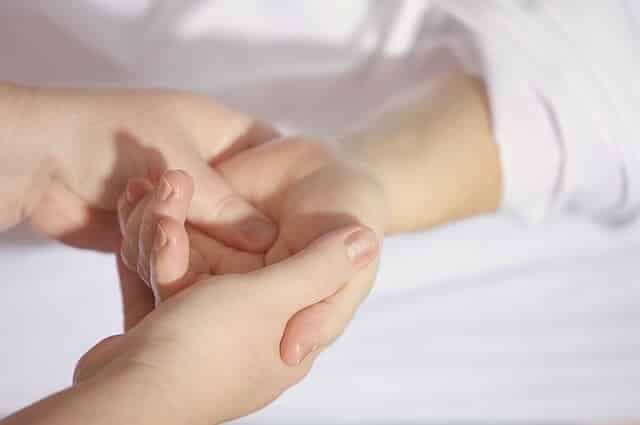Dry needling is a form of alternative medicine that involves thin needles being pushed into the skin at trigger points over the body. The intention is to relieve pain in the body by loosening knots or hard tension in the muscles.
Having a knot in a muscle or tissue can be incredibly painful and cause other issues. Tapping into these pressure points with the needles resolves the knot and puts a stop to the pain. I’ve had a couple of dry needling sessions and a little twinge I had in my lower back went away almost instantly.
Dry needling is not to be confused with acupuncture. Acupuncture follows the Chinese ancient medicine principles that believe the body is a map of energy pathways and these pathways can be restored through inserting needles.
On the other hand dry needling has a more scientific approach to focusing on the trigger points around the body. If you want to know more I wrote a post about what dry needling is and how it works here.
Contents
What Conditions Is Dry Needling Used to Treat?
There is a wide range of conditions that can be treated with dry needling, some of which include:
- Repetitive strain injury
- Carpal tunnel syndrome
- Migraines
- Pinched nerves
- Nocturnal cramps
- Loss of mobility
- Pulled muscles/tendons
- Back and spine problems
Benefits of Dry Needling
Improves Joint Mobility
Patients who have been through a number of dry needling sessions will see an improvement in their range of motion and joint mobility. A lot of athletes have turned to dry needles to improve and maximize their performances, as have patients who have suffered a reduction in mobility through injury.
Reduces Myofascial Pain
Myofascial pain is a chronic pain condition that can cause a suffer considerable pain all over their body. It’s hard to treat and everyone is affected differently, but dry needling is one method of treatment that has been proven to be effective.
A study published in the Journal of Orthopaedic and Sports Physical Therapy (source) shows evidence that dry needling reduces myofascial pain by tapping into trigger points on the body after carrying out research on the topic.
Speeds Up Healing and Recovery
One of the main reasons people are referred to a dry needling therapist, or choose to seek one themselves is to speed up their body’s healing. Using needles to pierce the skin and apply pressure to trigger points stimulates better blood flow which in turn stimulates your body’s natural healing process.
Stimulates Your Brain to Release Endorphins
You will notice a twitching response when the needles hit the trigger points. This is your brain sending impulses to the point and receiving information back. You will release endorphins and other hormones that help to reduce pain and relax your mind and body.
How Many Dry Needling Sessions Do I Need?
This is tough to answer. Everyone will have a different experience and each condition being treated is different. Typically you will notice a small change after the first session, and within 3-4 sessions, you should start realising if the treatment is going to be effective.
After the source of the pain has been located and the main pain and condition causing you a problem has been worked on, the therapist will recommend follow-on treatments. They will usually advise a plan of myofascial release, neuromuscular re-education, or other forms of massage that can rehabilitate your injury.
You may feel tired after dry needling, this is normal. As you have an endorphin dump you will feel drained. Make sure you drink plenty of water and rest as much as possible to give your body a chance to heal.
Check this post for a more in-depth look at the side effects of dry needling therapy.
In Summary
Dry needling is an interesting form of alternative therapy. There is a lot of evidence to support how effective this form of therapy is at reducing pain and achieving the other benefits as highlighted in this article.
It’s a simple form of therapy but requires a skilled professional and you may have to search for a practitioner, but it’s worth doing. If you’re suffering from physical pain and have tried different therapies without success, this might be the treatment that finally hits the spot.

I’m a MA, (CMT) Certified Massage Therapist, Licensed Massage Therapist (LMT), and Reiki Master — I’m a licensed massage therapist with over 10 years of experience in the industry.


